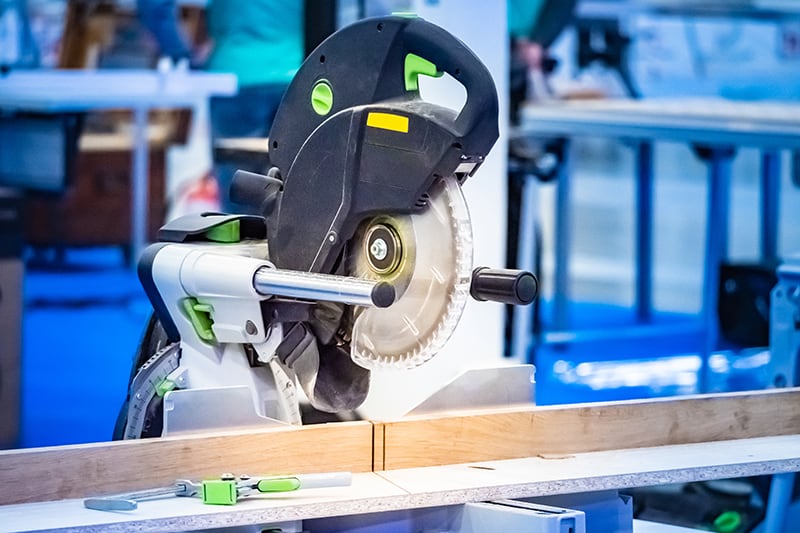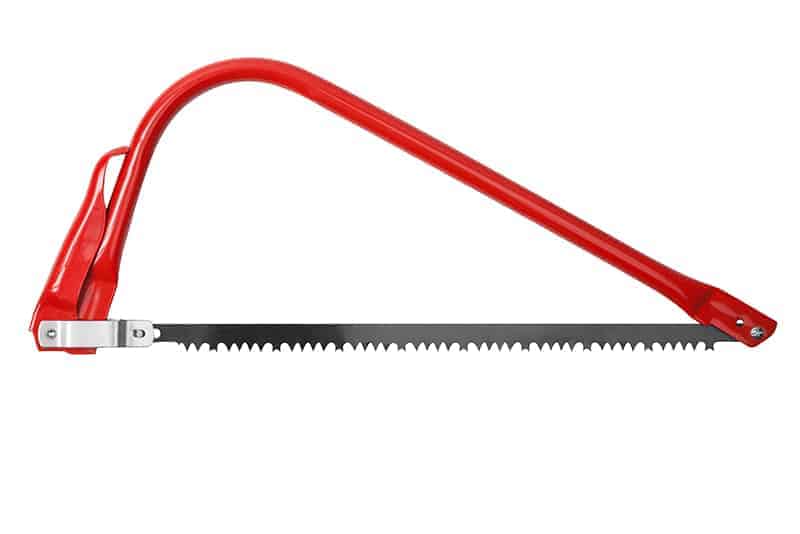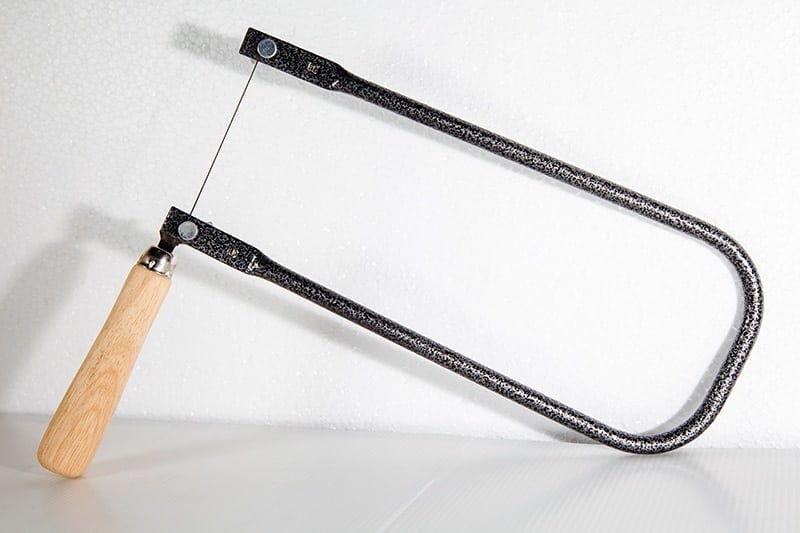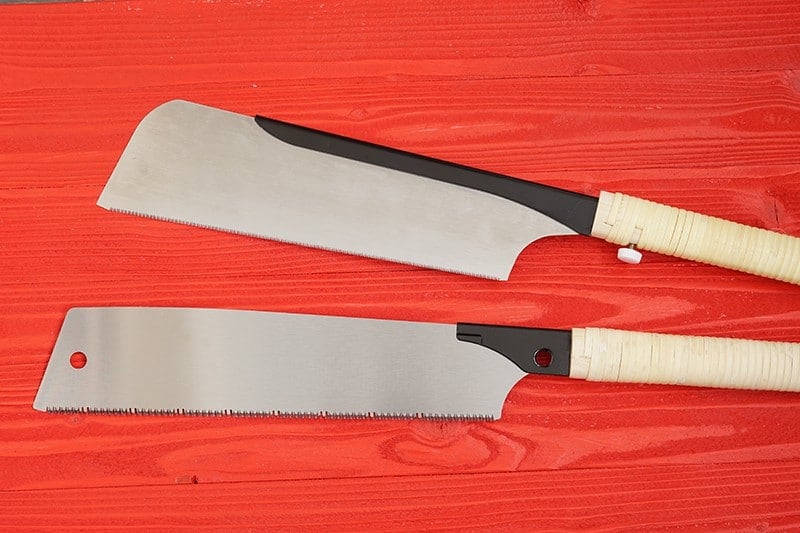Home growers and gardeners tend to be quick to learn one of the most uncom... Read More
- Home >
- 33 Different Types of Saws with Pictures
33 Different Types of Saws with Pictures

Saws can vary from the most simple style of cutting tool to an advanced piece of powered machinery. Depending on your job or the hobbies you’re interested in, the type of saws you own or would like to own will vary dramatically. Anyone in the construction industry is likely to need a wide variety of saws, including those which are equipped to deal with a range of scenarios, as well as those which are designed to handle a specific task. Carpenters or anyone with a home wood workshop will need an entirely different set of saws, with some crossover.
Meanwhile, if you’re a homeowner keen on building your own shelves, erecting a garden fence, or pruning your tall trees and shrubs, there will be a few types of saws that can help you out too. Knowing which saw you need might seem like a daunting task, so we’ve broken down the main types of saws available, how they work, and what they are best used for.
Hand Saws
Hand saws are simply any type of saws that are powered by the force of the user, rather than being powered by electricity, battery, or gas. These saws are common in a variety of trades, with many of them being suitable for a wide range of tasks around the home and garden as well. The benefit of these saws is that they are easily portable, take up very little storage space, and are more inexpensive than power saws. However, they typically take longer to finish a job than a powered equivalent, so they may be most suitable for smaller tasks.
Types of Hand Saws
1. Hack Saw
The hack saw was created to cut through metal, and due to its thin blade, it works well to cut through thin materials such as plastic or metal pipes. For very occasional use, it could also be used as a multi-purpose saw for cutting through wood, but this could damage the blade. This saw holds a fine-toothed blade under tension across a C-frame, typically with between 18 and 32 teeth per inch. The hack saw is one of the most common types of saws and is an essential hand tool for small DIY jobs around the home.
2. Coping Saw
The coping saw, as the hack saw, has a blade that is secured in place by tension. It is used for making curved cuts on wood, and in fact, this is where it gets its name from, as it is ideally used to create coping joints rather than miter joints. The blades of these saws are narrow, with between 15 and 17 teeth per inch of the blade. These saws are lightweight and typically measure around 6 inches across.
3. Crosscut Saw
This saw is used for making rough cuts of wood, for example, trimming branches or cutting lumber, and is designed to cut across the grain of the wood (i.e., perpendicular to the grain). These saws have large teeth and a relatively thick blade to make it sturdy against rough wood. Crosscut saws can be for use by one person, or for two people simultaneously. The two-person crosscut saws have a handle at either end and are also sometimes called a lumberjack saw. These are great for cutting backyard planks to size, and might also be handy on camping trips.
4. Bow Cut Saw
A bow cut saw is a modern type of crosscut saw. It is a medium-sized hand tool that is most commonly used outdoors for pruning trees and cutting logs. A bow cut saw has crosscut teeth that are able to remove sawdust while being pushed in and out. Their blades are fairly long and narrow, making them suitable for cutting thick sections of wood. They can also be used to make curved cuts.
5. Fret Saw
These saws are designed to complete much more intricate woodwork. The name of ‘fret’ comes from the French word ‘freter,’ which translates in English to ‘lattice,’ as this saw was made for use on latticework. Its blades have around 32 teeth per inch, which makes them very precise and able to produce accurate work; however, it also makes them fragile. Fret saws are able to produce curved cuts, like a coping saw, but the coping saw offers much less accuracy than a fret saw.
6. Keyhole Saw
These saws take the shape of a dagger, with a blade that comes to a point at the opposite end of a single handle. They are also known as ‘jab saws’ because the sharp point allows them to jab through materials such as drywall, and then saw through. Their thin blade makes them ideal for making awkward cutting maneuvers or making small holes. They are also used for cutting rough patterns out. These types of saws typically come in two varieties; with a fixed blade or with a retractable blade.
7. Japanese Saw
A Japanese saw consists of a strong and narrow blade attached to a handle at one end. These are designed to cut on the pull motion, unlike most other saws that cut on the push motion. The benefit of this is a cleaner and narrower cut. These saws are also said to offer more control but are designed for smaller and more precise jobs. A push saw, by comparison, would allow the user’s weight to get behind the saw to work on tougher cuts.
8. Rip-Cut Saw
A rip cut saw is one of the most common types of saws that anyone who works with wood will own, and probably the saw that gets used the most often as it is versatile and suitable for a number of jobs. A rip cut saw is designed to cut wood parallel to the grain. It has few teeth per inch compared to most other hand saws, though each tooth is very sharp to remove chips of wood as it works, almost like a collection of chisels working together all at once.
9. Back Saw
These saws are also known as dovetail saws, as they are ideal for making dovetail joints that require precision and accuracy. These saws have fine teeth and narrow blades, making them suitable for making exact cuts. Back saws benefit from a stiff piece of metal such as brass or steel attached to the opposite side of the cutting edge. This helps to give them greater control and means they can cut with less applied force.
10. Pruning Saw
These saws are specifically designed for use in the garden, as a quick and easy means of pruning trees and large shrubs. They have a single curved handle attached to a curved blade, and can easily access even hard to reach branches hidden amongst dense-growing trees. Pruning saws have many more teeth per inch than similar-sized saws, making them an excellent tool for smaller pruning jobs when a chainsaw would be unnecessary.
11. Veneer Saw
These saws are designed for cutting hardwood veneers, laminates, and plastics. They are a double-edged saw with a small, curved blade, usually measuring just 3 or 4 inches long. Their size means they are only useful for working on small areas, but they offer fast and smooth results. Typically these saws have around 13 teeth per inch of blade. When teamed with a straight edge, the veneer saw can cut square-edged materials perfectly to achieve butt-joints for matching veneers.
12. Wallboard Saw
Also known as drywall saws, these saws look very similar to keyhole saws. The difference is that wallboard saws usually have shorter and wider blades. Their blades are also often double-edged, with sharp teeth running along both the top and bottom sides of the blade. These saws have a pointed nose and are used for punching holes into drywall or paneling. They tend to have fewer teeth per inch than a keyhole saw, and are ideal for making rough cuts.
13. Camping Saw
There are many types of camping saws available, offering various features and differing designs. For most people who will need a saw when camping, the most important elements are that the saw is versatile and able to cut a range of materials and that it is compact and lightweight for easy portability. The folding camping saw fits all of these criteria, being ideal for slipping into a pocket of clothing or a bag. They take up hardly any space at all and are useful for cutting up firewood, trimming branches, or making a number of any other cuts you might be presented with in the wilderness.
14. Bone Saw
A bone saw as you might expect, is for cutting bones. These are used primarily in the meat butchering trade, or by hunters to make cuts through deer or other game. A stainless steel blade is best for these saws as they will not corrode under contact with animal blood.
Power Saws
Power saws are saws that are powered by rechargeable batteries, electricity, or gas motors to make cuts. These can be stationary tools or portable tools. They are great for efficiency and precision and help to complete cutting jobs much more quickly than hand saw equivalents. The drawback of these is that they can be quite costly, though if you buy a reliable option, it should see you through many years of cutting. While many of these power saws are simple to use, some may be complex and dangerous to operate, and special training might need to be taken before you proceed with working with power saws.
Types of Power Saws:
15. Circular Saw
This saw is so named because of its blade, which is a circle shape. The circular blade spins at high speed and is guided down by the user to cut the material which needs to be held firmly in place underneath it. These saws are hugely popular because of their versatility and portability. Unlike a table saw, these saws are reasonably lightweight and so can be transported to construction sites or used in different locations with ease. They are also compatible with a number of different blade types, enabling them to cut through various materials, including stone, metal, wood, plastic, and ceramics.
16. Miter Saw
These saws operate similarly to circular saws in that they have a round blade which is pulled downwards to cut the material. However, a miter saw is specifically designed for making precise angled cuts, notable for miter joints, which are when two pieces of wood are seamlessly joined at an angle. Miter saws allow you to custom set the tool to make any angle of cut you need, and they are indispensable if you are cutting trim or molding.
17. Compound Miter Saw
A compound saw is like a hyped-up miter saw. It has the same blade which operates on an arm instead of on a pivoting lever, giving the user greater scope for adjustment on more complex cutting. These saws can produce miter, straight, and compound cuts, and are great for efficiency and precision.
18. Jigsaw
A jigsaw is a handheld power tool that can make both straight and curved cuts. It has a downward pointing blade that is guided along by an upper handle and can come in both corded and cordless varieties. They are lightweight and easy to handle, as well as being fairly quiet, and are most suitable for cutting out patterns in thin materials such as plywood. Thicker blades are available to be purchased for jigsaws to allow them to cut through metal, tile, or ceramic, but these are not typically included as standard. Jigsaws are a versatile tool that will see heavy use in home woodworking households.
Band Saw
19. Stationary
Stationary band saws have become popular amongst safety-conscious carpenters as there is no danger of kickback like there is when using a table saw. Band saws have a band of continuous blade which spins around 2 or 3 wheels to make cuts. The blades have fine teeth, which make them suitable for working on a range of materials. The blades form part of a heavy table, making this a tool for a workshop rather than one which can be driven around. It can cut wood, pipes, and plastic, but is limited to cutting at a depth of just a few inches. This tool is relatively quiet for a power tool, so it may appeal to those with a workshop in a residential area who don’t want to disturb their neighbors.
20. Portable
Portable band saws are simply the portable version of the stationary band saw, with a looped blade that runs around 2 wheels for cutting. The benefit of this tool is that it can be taken to a jobsite with ease, but it is only suitable for cutting smaller items such as pipes. This tool, in particular, is popular among metalworkers, plumbers, and welders.
21. Table Saw
Table saws have circular rotating blades that emerge upwards from out of a table to cut the chosen material. These work almost in the opposite way to a circular saw, in which you pull the blade down onto your material. With a table saw, instead, you push your material onto the blade. The blade depth can be adjusted to suit your cutting needs, and the blade itself can be swapped out for masonry or metal blades so that you can cut different types of materials. These types of saws are ideal for making exact straight cuts, but require training before use as they can be dangerous to operate.
22. Chainsaw
Chainsaws operate with the use of a linked chain that rotates around a piece of steel, with specially designed teeth attached, which cut through wood at high speed. It is most commonly used to cut through lumber and fell or trim trees. Chainsaws come with various power sources, including gas engines, battery-powered motors, or corded electric powered motors. Chainsaws with gas engines have the most power; however, they can also be more difficult to use because they vibrate the most. Chainsaws powered by battery or electric cables are better for longer jobs as they will induce less fatigue on the user.
23. Chop Saw
These saws are like circular saws and offer portability while also being larger than a standard circular saw. These saws are intended for cutting through metal or masonry and have smooth toothless blades that have been specifically designed with abrasives to cut through the chosen material. Sometimes these saws link up to a water line to reduce dust when in use.
24. Flooring Saw
This is a specialized tool that has been specifically designed to aid in fitting flooring, including hardwood, laminate, and bamboo. It is able to make straight cuts as well as miter cuts and is designed to be a portable replacement for a table saw, able to complete any cutting task you might face during laying flooring.
25. Panel Saw
These saws operate similarly to table saws, but they cut either vertically or horizontally, often with a sliding table that allows you to feed materials through to the blade. These saws are commonly used in producing road signs, cabinetmaking, and other industries where cutting of large panels is required.
26. Oscillating Saw
This tool looks like a grinder with a blade attachment. It oscillates so quickly that it feels like a slight vibration when using it. These saws offer great versatility, as they can not only cut, but can also grind, scrape, or remove caulk and grout.
27. Radial Arm Saw
This saw has a circular rotating blade attached to an arm that is raised over the table it is attached to. The arm can be moved at various angles to allow the user to achieve straight cuts, miter cuts, and compound cuts.
28. Scroll Saw
These portable tools are designed for carrying out intricate and precise work such as patterns, spiral lines, and scrolls. The blade can be continuously oscillating, or attached to a band, and is fixed to a small table where you can hold your materials in place while cutting. This tool is best at producing curved edges.
29. Pole Saw
Pole saws consist of a telescopic pole with a chainsaw attached to the opposite end to the handle. These saws are designed for pruning and trimming hedges and trees of tall heights, without having to use a ladder. Pole saws can be battery powered and, therefore, cordless, electric powered, or powered by a gas engine.
30. Wet Tile Saw
These saws are designed specifically for cutting flooring or wall tiles without chipping or cracking them. This is a portable piece of machinery that can be easily transported between job sites and used in situ at the place where the user is fitting tiling. They operate similarly to a circular saw, with a round blade that spins at high speed and is pulled down over the tile to slice it. These are essential tools for people in the kitchen and bathroom or flooring trades. They offer excellent accuracy and speed up the job.
31. Reciprocating Saw
These small saws offer excellent versatility on a job site. Their size makes them easily portable, and they can be used on a variety of projects, with a good bit of power behind them. They work by powering a small blade in a back and forth motion to cut through both metal or wood. They can be cordless or corded depending on power type.
32. Rotary Saw
These saws have a small blade attached to a drill-style handle. They are handheld saws that are powered by rechargeable batteries or corded electric. They are versatile enough to be used on a variety of projects, from construction, home DIY, or crafting. They are an alternative to handheld keyhole saws and are particularly useful for cutting drywall, paneling, or patterns.
33. Track Saw
This saw resembles a cross between a table saw and a circular saw. It has a round blade attached to a handle which is pulled down by the user to cut their materials underneath, but it also attaches to a track so that it glides along the rails to give perfect straight cuts every time with minimal effort.
Related Content
-
All about Spider Mites and How to Get Rid of Them
-
Best CFL Grow Lights – Grow Guide & Reviews
CFLs are no doubt among the most popular light types used in the last 20 y... Read More
-
Coconut Coir – What It Is, Varieties, and How to Use It
The growing medium meets soil additive, coconut coir (or coco coir for sho... Read More
-
What is Perlite? What is its use in the garden?
Have you ever used a bag of commercial potting soil? If so, you may have n... Read More
































